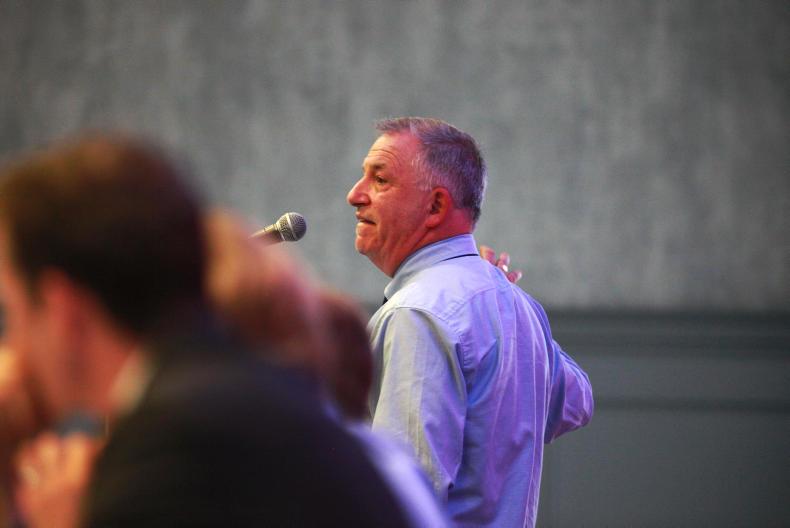Teagasc is confident that, with industry involvement, Ireland can deliver on its climate change targets without cutting the national herd, according to Teagasc director Gerry Boyle.
“We are confident with all industry involvement, with a focused public and private advisory service, with support from the Department, we can deliver those targets and hold livestock numbers constant,” he told the 2019 Agricultural Science Association (ASA) conference.
Carbon footprint
“We have talked about the importance of improving the carbon footprint for several years.
"It’s absolutely hugely important, but the policy is one of reducing absolute levels of emissions.
“While the carbon footprint has been going down, because farmers have been implementing efficiency measures and that has benefitted their bottom line, numbers have been going up.
Dilemma
“That’s the dilemma and I’m not sure the significance of what we’re heading into is appreciated, even by the members of the ASA at this stage.
“The problem is exceptionally serious. The targets are really demanding.
"It’s an existential issue in the agriculture sector, because you can’t reduce if you don’t reduce animals,” he said.
Boyle said that there is no other industry with that problem.
“It’s all about decarbonisation. They can switch to alternative sources.
"There is no alternative in livestock production and that’s not appreciated, but the challenge is huge.
“I think we have a window of a couple of years to turn the curve downwards,” he said.
Big MACC
Given the targets that have been set, we have a couple of years to get this right, he said.
“We believe with the implementation of the measures in the MACC (Marginal Abatement Cost Curve) – such as the use of protected urea rather than CAN, application of low emission slurry spreading, the replacement of chemical nitrogen by clover and so on” - Ireland can meet the targets, he said.
Read more
Irish beef sent to UK for processing – Bord Bia
‘Greatest embarrassment of all time’ if BEAM money is not drawn down
Teagasc is confident that, with industry involvement, Ireland can deliver on its climate change targets without cutting the national herd, according to Teagasc director Gerry Boyle.
“We are confident with all industry involvement, with a focused public and private advisory service, with support from the Department, we can deliver those targets and hold livestock numbers constant,” he told the 2019 Agricultural Science Association (ASA) conference.
Carbon footprint
“We have talked about the importance of improving the carbon footprint for several years.
"It’s absolutely hugely important, but the policy is one of reducing absolute levels of emissions.
“While the carbon footprint has been going down, because farmers have been implementing efficiency measures and that has benefitted their bottom line, numbers have been going up.
Dilemma
“That’s the dilemma and I’m not sure the significance of what we’re heading into is appreciated, even by the members of the ASA at this stage.
“The problem is exceptionally serious. The targets are really demanding.
"It’s an existential issue in the agriculture sector, because you can’t reduce if you don’t reduce animals,” he said.
Boyle said that there is no other industry with that problem.
“It’s all about decarbonisation. They can switch to alternative sources.
"There is no alternative in livestock production and that’s not appreciated, but the challenge is huge.
“I think we have a window of a couple of years to turn the curve downwards,” he said.
Big MACC
Given the targets that have been set, we have a couple of years to get this right, he said.
“We believe with the implementation of the measures in the MACC (Marginal Abatement Cost Curve) – such as the use of protected urea rather than CAN, application of low emission slurry spreading, the replacement of chemical nitrogen by clover and so on” - Ireland can meet the targets, he said.
Read more
Irish beef sent to UK for processing – Bord Bia
‘Greatest embarrassment of all time’ if BEAM money is not drawn down






 This is a subscriber-only article
This is a subscriber-only article











SHARING OPTIONS: